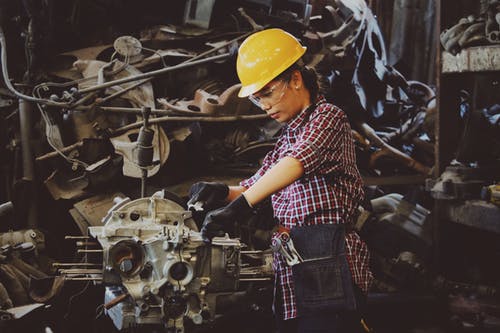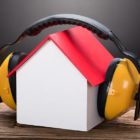Noise surveys commonly involve the use of sophisticated sound measuring equipment to help determine the ‘sound environment’ of a particular area. Equipment used by engineers include type 1 sound level meters, external environmental microphones and low noise microphones.
There are actually a number of different types of noise surveys which aim to assess the different aspects of our sound environment including environmental noise surveys and others. In this guide, we will be looking at the main types of noise surveys which are undertaken in the UK.
Occupational Noise Surveys and Risk Assessments
The Control of Noise at Work Regulations apply to all industry sectors in the UK. The overall aim of an occupational noise survey is to be able to assess the amount of noise or sound to which employees are exposed to whilst at their workplace. Hearing impairment and damage is a form of workplace injury and is therefore treated as such (more information about work-related diseases).
One of the primary focuses is the protection of hearing, though there are many other benefits in assessing the sound environment of the workplace. If it is the case that an employee is exposed to a typical noise on a daily or weekly basis which exceeds 80dB(A), then an occupational noise survey and risk assessment must be undertaken to comply with the regulations set out.

If the noise levels to which the employees or workers are exposed to on a daily or weekly basis exceed 85dB(A), hearing protection is required and must therefore be provided to the employees. Other important factors must too be considered, such as health screening and hearing tests.
Such circumstances apply to workers using heavy machinery, those working in industries with loud environments (such as concert sound engineers) and various other professions.
How Are Surveys Conducted?
In order to conduct an occupational noise survey, representatives will likely have to visit your workplace in order to review what current provisions are in place in order to protect hearing and safety from excess noise and measure the levels of noise which employees are typically exposed to.
A formal report will be provided which will likely include any recommendations, demonstrating that noise has been identified and assessed in complete compliance with Regulations.
What is a Background Noise Survey?
A background noise survey works to measure the day to day variations in the sound level in a given area. Background noise surveys are usually required when making planning applications and by local authorities in order to ensure that a new development for example, will not be generating unreasonable levels of noise or be adversely impacted by the exiting levels of noise in the local area.
Whilst the background noise can easily be assessed by a number of spot measurements (short attended periods), experts do often recommend leaving equipment for a longer period of several days. This will allow a detailed review of the sound environment to take place, including diurnal variations and features of the sound environment, for example, the dawn chorus or temporary noise from boiler flues, that may other not be seen and end up being missed.
Noise Impact Assessments and BS4142 Assessments
A noise impact assessment is a more detailed noise survey which expands from that of a background noise survey. They are usually required when one is applying for Planning Permission and many authorities require it in order to establish the environmental impact of a development.
It will typically involve an assessment of the background noise environment, as well as a comparison of this to either the measurement or prediction of the noise level which is generated by the proposed development.
In the case of a proposed development, the impact of existing noise sources will need to be assessed to make sure that an acceptable external and internal dwelling environment can be created without a burden unreasonable in nature. These types of tests are required for new builds, requiring sound insulation testing as per Approved Document E.
A noise impact survey may also be conducted in order to measure the status quo. At times, industry is required to keep on top of the level of noise which they emit in order to ensure compliance with any imposed noise conditions and in order to demonstrate good neighbourliness.
Noise Nuisance Surveys and Expert Witness Services
‘Noise’ is typically defined as an ‘unwanted source of sound.’ Noise can disturb people in a number of ways. In fact, a noise does not have to be loud to be intrusive and many different aspects, such as noise character, can ultimately influence the way that noise is going to be perceived.
If there is a complaint made about noise, a survey would be recommended and would likely be undertaken to measure the noise. This will commonly involve evaluating the decibel level of the noise, spectral content of the noise (known as pitch), background noise level in the absence of the noise and various other assessed factors.
Whether the noise will be considered a nuisance takes account of these factors, but will also be considered against the frequency and duration of the noise, the character of the area it affects and the time of occurrence.
The objective noise levels will be pitted against the noise guidance and combined with observations of noise impact in order to determine whether a common nuisance exists.




